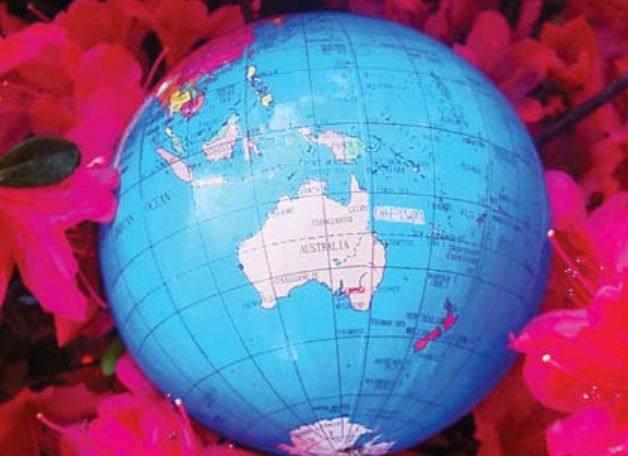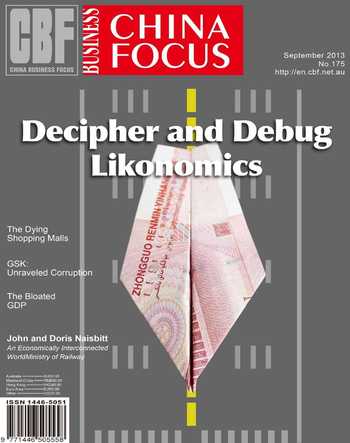An Economically Interconnected World

Who would not want to buy best quality for best price? We are no exception and this is the reason why we periodically drive to a“fashion outlet center” located just a few kilometers east of Vienna. Gucci, Prada, Armani, Escada, Todds and Burberry are lined up like sparrows on a wire. The price is right, 20 to 50 percent reduction on the originals. No wonder that soon after it opened its doors the center was flooded by Austrians, Hungarians, Czechs, Slovakians and Russians.
Shoppers have always been surrounded by a mixture of more or less familiar languages. But now a language not so often heard before seems to take over: Chinese. Large buses are unloading Chinese fashion tourists to return some hours later to upload them each carrying bursting bags all with brand names: Gucci, Prada, Armani, Escada, Todds, Burberry. If the happily exhausted bargain hunters would check the labels in their bags, the shoes, shirts, jackets and suits would show that most brands are: “Made in China.” Some might be surprised that they just contributed not only to the Austrian, Italian, British and French economies, but to the Chinese economy as well. Made in China, bought in Austria, and in between a whole chain of businesses in various countries are linked and eager to get their share of the cake between designer, producer and end user: tailors, factory workers, transport industries, trade companies, and sales personal, to name some of them.
It is a small example of how connected and intertwined the global economy has become. We are all impacted by what happens to all others, and we all contribute to the benefit or the disadvantage of the whole. But in our world view we are still hanging on to looking at the pieces instead of getting an overall view.
Our world is in transition. A May 2013 prognosis by The conference Board of Global Economic Outlook estimates the share of emerging and developing economies in the global GDP will grow to around 52 percent by 2025 while advanced economies output will shrink to below 48 percent. In the shift from the dominance of establish economies to an at least equal role of emerging economies we will have to find our new roles-- as countries, as companies and as entrepreneurs and workers.
The problem is that navigating through economic ups and downs we hold on to roadmaps of the 20st century. We are using locally narrowed measures that have become fairly useless in a interconnected world. “Globalization,”writes Oxford Professor Ian Goldin in his book New Global Governance Challenges, “is leaping ahead of the lethargic [and Western dominated] institutions of global governance.” Every percentage point Chinas GDP grows or shrinks is commented heavily, mostly detached from how connected Chinas economy is with the rest of the world. Countries, industries, institutions as well as individuals are connected as never before in history.

If Chinas largest trading partners, the EU and the U.S., have shrinking and stagnating economies, it doesnt take a genius to predict an impact on Chinas exports, which even the most generous Chinese fashion tourists will not be able to compensate. But it will help. By 2012 the number of Chinese traveling to foreign countries rose to 83 million. Australia, suffering from Chinas decreasing demand in natural resources is benefitting from the increasing number of Chinese tourists who benefit from the decreasing value of the Australian Dollar versus the US Dollar. From January to March 2013 the number of Chinese tourists rose 19 percent to 334,000. Hotels near the Great Barrier Reef welcomed a rise of 25 percent in Chinese guests.
The persistent demand on new cars in China feeds the revenues of the automobile industry, and in fact saved the German car industry. In contrast Chinas decreasing demand in palm-oil in China brings troubles to Malaysian or Sumatra palm-oil plantation owners.
Chinas rise in wine consumption, around 20 percent each year, creates the largest potential market for consumers and at the same time Chinas own wine production becomes an increasing competitor for established wine producers. It was shocking news when in 2011the English Magazine Decanter ranked a Chinese Cabernet in as number one beating all Western competitors.
China is in transition to a consumer oriented economy. A slowdown in the global economy will result in layoffs in export oriented companies. Decreasing wages and high employment rates are encouraging American manufacturers to move their production back to the U.S. Investment still is the main driver in the Chinese economy, and the shift to a consumption driven economy is not without risks. Producers of consumer goods, clothes, household supply and food can count on Chinas rising middle class and its demands for higher quality.
Consuming of French wine, wearing Italian fashion, driving German cars and using Western high tech products is not the only way China contributes to the global consumption. Chinese investment in services, technology and established brands are gaining speed. Volvo, a pioneer in safe cars became Chinese already three years ago. The vacation pioneer Club Méditerranée welcomed the investment of the Fosun, Chinas largest privately held conglomerate with a success story any American company would be proud of. Early 2012 The Chinese hydrodynamic power company Three Gorges invested $2.7 billion in a 21 percent share of Portugals electric energy industry.
Yes, the Chinese economy grew“only” 7.5 percent in the second quarter of this year, a slowdown from 7.7 percent in the first quarter and from 7.9 percent in the final three months of 2012. Much was made of this slowdown in the world press: Chinas economy was leaving dramatic growth behind. As if 7.5 percent growth against Western no-growth were not dramatic growth enough. But different from the West, which has overslept the awakening of the African and Latin American markets, China sees itself as part of a global economy, as a consumer market, as workshop of the world as well as a growing innovator . China has become the largest recipient of foreign direct investment topping the United States. China will soon become one of the largest investors on the globe.
Chinese tourists traveling 5000 miles to buy brands made in China in Austria contribute to Austrias economy they contribute to others. Germany benefits from the export of paper cutting machines to China, the Korean SK group signed a $160 million investment agreement for a joint venture to produce batteries for electric cars. The examples could go on and on. Each one of them a piece in markets that can no longer be understood as single economies but as parts connected to each other affecting all other parts of an increasingly inseparable global economy.

